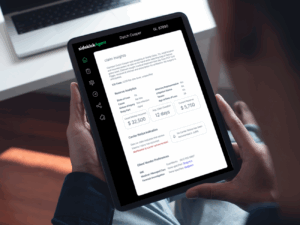April 10, 2017
April the Giraffe has been quite the internet sensation! Some 20 million people around the world have followed her seemingly endless pregnancy since February. Although currently closed for the season, the Animal Adventure Park in Harpursville, New York, April’s home, has jumped on the opportunity to raise awareness about giraffes and the educational animal park itself by live-streaming the giraffe enclosure via Facebook and YouTube. At times, more than 250 thousand have been on the live stream at once tracking her progress.
April’s story inspired pregnant human Erin Dietrich to don a giraffe mask and post her own parody of the giraffe watch on Facebook. However, Dietrich welcomed her own baby, a boy, on March 8. Meanwhile, April still waits, as does the rest of the world.
Pregnant women and their partners might empathize with April. Pregnancy involves much anticipation, preparation and uncertainty. As April’s keepers know, eating healthful foods is important for expectant moms, so they monitor her diet carefully. For humans, Womenshealth.gov advises consuming more protein, iron, calcium and folic acid, as well as additional calories. “Sensible, balanced meals combined with regular physical fitness is still the best recipe for good health during your pregnancy,” the website notes.
Expectant moms know they ought to eat well, but there are many aspects of pregnancy and preparation for life beyond that are not as clear. Everyone’s experience is unique, and, for most people, navigating what comes next – not only the changes a baby brings, but also immediate questions about leave and health benefits – can be an unfamiliar and complicated process.
The Family and Medical Leave Act (FMLA) covers pregnancy as a serious health condition. Mothers are entitled to up to 12 weeks of time away from work to prepare for and recover from delivery, including time away from work for prenatal visits. But FMLA provides job and benefits protection only.
For income replacement, some employers offer short-term disability (STD) benefits, and a handful of states, including New York where April lives, provide state disability insurance (SDI) benefits for pregnancy. Typically, maternity leave eligibility will begin either when a healthcare provider states the mother can no longer work or approximately two weeks prior to the estimated delivery date. And coverage continues for six weeks following a normal delivery and 8 weeks following a C-section, unless complications arise.
In April’s situation, her due date was mid-February. Therefore, her FMLA and STD/SDI could have begun at the beginning of February. We know not all babies are born when planned, and complications sometimes occur. In April’s case, she would be entitled to 26 weeks of STD/SDI benefits. After that period, she might need to transition to long-term disability (LTD) if she continues to be disabled beyond that period.
But wait – after 12 weeks, her job would no longer be protected, right? Not necessarily. Typically, normal pregnancy is not considered a disability under the Americans with Disabilities Act (ADA). However, if a complication should occur, the condition would likely rise to the level of a covered disability. Also, in many states, including New York, reasonable accommodation of pregnancy-related conditions is the law. In that case, April could be provided with leave as an accommodation, as long as there is some evidence she could return to work in the near future. In April’s case, it seems to be anyone’s guess when she’ll actually deliver, but considering a giraffe delivers after 14-15 months of pregnancy, I would grant her additional leave. April’s FMLA protection would run out on April 19, so the interactive discussion should probably start soon!
After a baby is born, many parents seize the opportunity to bond with their new child. Increasingly, employers are offering paid parental leave to bond with children. And, some states offer job-protected leave beyond the 12 weeks FMLA guarantees. In April’s case, she currently lives in a state where she is limited to the FMLA protection of 12 weeks, and she doesn’t work for an employer who provides paid parental leave. There is good news, however; in 2018, New York will provide paid family leave of up to 12 weeks to cover care for family members and to bond with a new child.
Remember, fathers also are entitled to time for bonding with their new children. So, expectant dad Oliver – seen pacing in the background of the giraffe cam – and April have been planning their own leave after the baby is born. Now that April’s newfound fame has made her the breadwinner of the family, they have decided that after April’s 6-8 week recovery, she will return to work and Oliver will take 12 weeks off to bond with the baby. Although it will be unpaid, the time spent with baby giraffe will be worth its weight in gold.
Healthcare coverage is important to a developing child, so April and Oliver will need to add “baby g” to their health insurance. Babies will need nine well-baby visits and 16 immunizations during the first year. These preventive services are generally included at no additional cost under most insurance plans. Having a baby is a qualifying event which allows the ability to change benefits outside of the open enrollment period. Most plans typically require changes to occur within 30-60 days of the event; coverage is retroactive to the child’s date of birth. After that, waiting until open enrollment is the only option.
Navigating the nuances of pregnancy and parental leave can be stressful, but Sedgwick knows that caring countsSM. We can help employees understand leave and health benefits available in connection with pregnancy. Our colleagues are ready to answer questions and handle the details so new parents can have more time to concentrate on their bundles of joy.



